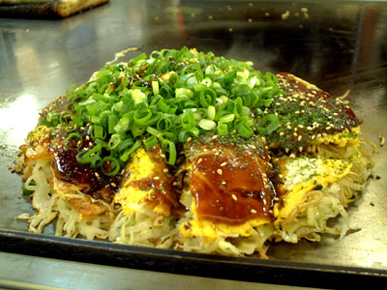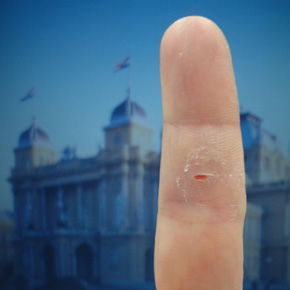“Hikigatari Battari #2” in 8 different cities! Without catching a cold, without injuring my throat, without losing or gaining any weight, I was able to safely finish all of the performances. Thank you. A special paid site called “Kita-Aoyama Image Redevelopment” is planned to go online on August 20th and will include pictures and detailed reports of the tour. (Just doing some advertising, fufufu…)
Now then. Those of you who go to school should be starting your summer holidays soon, right? As for those of you who work, what are your plans for the summer? When it gets to this time of the year in Paris, France, the “bonjour” will quite often be followed by the person asking you “so where are you going for the holidays?” Then, for example: “I’m going to Naples.” “Ah, how nice! It’s beautiful over there.” If you can have a pleasant, commonplace conversation like that, that’s great. However, if you say “I don’t have any holidays,” you might be causing them to silently worry over your health. That’s how commonly practiced it is there that August is a month of rest. All the quality restaurants with good sense, too, will close down for three to four weeks in August. In fact, the restaurants that keep doing business normally throughout that period are thought to be using temporary chefs in their kitchens so they aren’t trusted. In France, it seems that the mindset of “a person who doesn’t take vacations is an idiot” is definitely firmly in place.
Even the Japanese who have this image worldwide of being non-stop, diligent workers have been growing more relaxed in this regard for the last couple of decades. However, we are still ways away from a mindset of “holiday = common sense.” It stops at “holiday = ‘ah, I’m so jealous.’” And even before that, if you don’t choose your timing carefully, the mindset of “holiday = an inconvenience for your bosses” takes priority.
That doesn’t really apply to me. As long as I create what I need to create, do what I need to do and do it properly, I don’t have to worry about anyone else if I want to take a holiday. So I asked myself, “have I created what I need to create and done what I need to do?” And although my answer was this sort of “uhhh…“, if I’m going to be taking some time off this summer, doing it right now after I’ve finished my live tour feels like very natural timing in many ways.
However, I have a deadline for preparing all the new content planned for my special site “Kita-Aoyama Image Redevelopment” (opening on August 20th). If I think about that quickly approaching deadline, I do begin to feel like it might not be the best time for a vacation after all… However, in my case, I really need one, you see. I must see and experience more things, expand my outlook, get more and more EXP points. After justifying it to myself with such a sad excuse, I forced an opening in my schedule — albeit a tight one. The five days immediately following the tour — that’s all I’ve got. If I let this one slip away from me, I’ll only have a week of vacation days within the year at most. If worst comes to worst, even my New Year’s holiday might be compromised. I know that much. So, short as it may be, I’m going on a vacation.
Thus, when this column gets published on July 15th (Fri), I’ll already be on my solitary trip to a city in some other country. It’s been a while since I last got to experience that strange, fun feeling of tension when you’re sluggishly walking around and eating something in a carefree manner.[1]
Right. Question time.
Immediately following my live tour, I’ll be going abroad for a period of 5 days and 4 nights (including flights). Which city in which country will I be visiting?
Hints:
– I’m using a special advantage ticket from JAL’s Mileage Bank
– This will be my first time visiting there in 10 and a half years
– It’ll be my third voyage there
I believe you’ll find the answer in Column No.010.
2005/07/15
TL notes:
[1] Eating and walking in public is generally considered poor manners in Japan.

 Pettako & pegire
Pettako & pegire